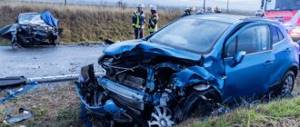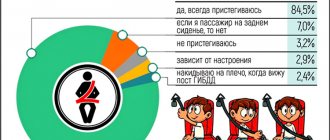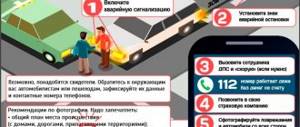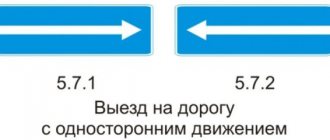Road accidents are not uncommon today and happen every day, so many are interested in the procedure for recovering damages from the culprit of the accident. Although under current insurance policies the insurer undertakes to reimburse the expenses incurred, in reality this rarely happens.
Because the company is trying in every possible way to find a reason not to pay anything. In such a situation, covering the costs by the real culprit of the incident is most fair and is supported by the position of the legislator. The article will tell you how to get funds, illustrate real situations from judicial practice and other important nuances that you should pay attention to.
Covering damage is the insurer's obligation
Reimbursement of the finances necessary for the restoration of both the vehicle and the victim after an accident is entrusted to the insurance company that issued the compulsory motor liability insurance policy to the person responsible for the accident.
The amounts of compensation in accordance with Article 7 of Federal Law No. 40 “On Compulsory Civil Liability Insurance” are quite limited:
- Up to 500 thousand for physical harm - damage, injury, death.
- Up to 400 thousand according to the property factor.
However, it is sometimes difficult to obtain these amounts from the insurer. As a rule, the reasons for refusal are:
- the driver at fault was drunk at the time of the accident;
- not having a driver's license with you;
- the commission of an accident during a period not specified in the insurance document;
- when the accident occurred, you did not have the insurance policy with you;
- expiration of the institution's license.
The listed factors are not considered legal. In the first two situations, the company reimburses the costs and subsequently has the right to go to court with a counterclaim against the culprit. If the document is not available at the time of the incident, the necessary information is subsequently established and payment is made. Upon expiration of the permission for the organization to carry out its activities, all claims are accepted by the RSA (Union of Automobile Insurers).
In a car accident, the burden of compensation falls on the driver in the following circumstances:
- The amount of the amount exceeds the established limit (then the refund is made according to the amount of the difference).
- The damage was not caused while moving (unsuccessful opening of the door while parked).
- Moral damage to injured participants.
- Lack of insurance (many people really neglect the established rule. Thus, court decisions in 2021 without compulsory motor liability insurance once again prove the unprofitability of not having a policy at all. Isaeva A. filed a petition with the court for reimbursement of the expenses she had incurred from the culprit of the car accident, Novikov. In 2021 at 17.00 an accident occurred on the M4 highway - a Ford crashed into another foreign car. An examination was carried out on the fact and it was established that, taking into account wear and tear, material costs would amount to 200 thousand rubles, but the plaintiff in her application asked for compensation without taking into account wear and tear. The court ruled that Novikov was guilty of commission of the act and will be punished in the form of a refund to the applicant based on the costs of restoring the car, paying an expert, as well as legal costs.
Terms of compensation for damage in case of an accident
While waiting for payment of material damage after an accident, the injured party will have to stock up on maximum patience, since even the official deadlines established by law cannot please a person who wants to quickly restore his car as soon as possible. The law establishes:
- the period for issuing a certificate of an accident from the traffic police is 10 days (from October 20, 2017, this document is no longer issued by the traffic police);
- the period for notifying the insurance company about an accident is 5 days;
- Damage compensation period for the insurance company is 20 days from the date of acceptance of all documents;
- The statute of limitations for damages is 3 years from the date of the accident, that is, a claim for insurance payment can be filed by the victim during this entire period.
What can be recovered
When filing a statement of claim or drawing up the text of a settlement agreement, you need to be extremely careful when working out the “requirements” clause. For example, as judicial practice shows, requests are not satisfied without taking into account the wear and tear of the vehicle. Because in this case, the owner seeks not only to return the funds spent on repairs due to an accident, but also to completely restore the car at someone else’s expense (to repair faults that prevent comfortable use even before the accident). This position of the owner is not welcome.
From the guilty individual, the victim has the right to receive:
- compensation for repair costs taking into account wear and tear (until recently, court decisions without wear and tear of OSAGO had a negative trend. However, the Constitutional Court clarified that the difference between the amount paid by the insurer will be paid independently by the culprit. In fact, most of the costs will have to be compensated by the defendants);
- costs for towing and car storage;
- loss of the commodity price of the vehicle. The calculation is made if the period of use of the machine is less than 5 years, the estimated wear and tear does not exceed 35%;
- moral damage in the event of physical and moral suffering of the victim (regulated by Article 1100 of the Civil Code of the Russian Federation. It is assumed regardless of the presence of culpable motives on the part of the perpetrator, but upon the fact of infliction by a source of increased danger, which, according to the provisions of Article 1079 of the Code, includes vehicles);
- compensation of wages for the entire period of time during which a person is unable to work;
- expenses for a representative in court, postage, examination and others.
If damage is caused to a person’s health, an extract from the medical record and a medical examination report determining the severity of the damage caused must be provided as evidence. In addition, you should provide documents indicating expenses - prescriptions, payment receipts from the pharmacy, etc.
Compensation by agreement of the parties
It is better to return funds for restoration by mutual agreement and good will, which happens extremely rarely, especially when it comes to large amounts of payments.
Before contacting the culprit, the individual undertakes to follow the following algorithm of actions:
- Have the necessary documents from the traffic police on hand.
- Visit the insurer (receive an amount of compensation that is clearly less than the actual amount of expenses or even hear an official refusal).
- Conduct an independent examination.
- And only at this stage start conversations with the other side.
The start of negotiations should be considered the submission of a claim with the following content:
- information about the culprit of the car accident;
- information about what happened;
- information about the damaged vehicle;
- results of the examination;
- the total amount of damage caused;
- the amount of payments transferred by the insurance company;
- the difference between the insurance premium and the actual damage;
- amount of payment from the culprit;
- contacts of the applicant for dialogue (address, telephone, e-mail).
IMPORTANT !!! When drawing up a document, you need to indicate in it a reasonable period for the return of funds, as well as the expected form of payment - in person in cash against a receipt or by bank transfer to the specified details.
All duplicates of documentation should be attached to the claim letter for the other party to review, namely:
- Act on the occurrence of an insured event.
- Resolution on the case of an administrative offense from the traffic police.
- Notice with a call for inspection.
- Expert opinion.
- Checks, receipts, service agreements.
It is recommended that the claim and paper support be sent by a valuable letter with a list of the attachments, as well as with a return receipt (which is subsequently attached in the event of litigation to other documents). You should also remember such important points as: no wear, compulsory insurance, court decisions.
Filing a claim in court
Appealing to the court for protection of violated interests is the last possible way out of the situation, since it will require considerable time, material costs, patience and nerves from the participants. It's better to conclude an agreement.
The application to the court is submitted at the place of residence of the offending individual and a state fee must be paid, based on the size of the claims. The amount of moral damage is not included in the scope, since it is established during the process by the minister of justice.
The case can be resolved in a magistrate's court if the amount of the claim does not exceed 50 thousand rubles. In other cases, the first instance will be the district judicial authority.
ATTENTION !!! It is important to remember that the preliminary conclusion of a settlement agreement does not deprive the prerogative of going to court. If some payments to the perpetrators have already been made, then it is in his own interests to attend the meeting and present receipts or statements of the bank transfer made in favor of the injured party. The servant of Themis will take into account the amounts already returned and may have to pay in a smaller amount.
Thus, if it is not possible to recover funds from the insurance company for one reason or another, or a small amount was subject to return, then the rest will be paid by the person responsible for the accident. However, the victim will have to spend a lot of money initially if they cannot reach an agreement peacefully and are forced to go to court.
How to compensate for losses after an accident
On average, more than 1.6 million Russian drivers get into accidents per year. The main tool for compensation for losses is insurance. An alternative option is to seek compensation directly from the person at fault. Let's look at what kind of compensation you can expect and how to get it correctly.
Who receives compensation and how much?
The easiest thing is for the owner of a comprehensive insurance policy: he can restore the car at the expense of the insurer, regardless of whether he is the injured party in the accident or is himself to blame for the accident. The insurance company will repair the car even after natural disasters or unlawful actions of third parties, if the corresponding risks are specified in the insurance contract. Casco covers all expenses minus the franchise (more on this below).
In the absence of comprehensive insurance, the culprit of the accident does not receive anything, and the injured party has the right to compensate for the loss under compulsory motor liability insurance. If the accident is registered with the involvement of the police, then the maximum amount of compensation under the “automobile license” is 400,000 rubles. When using the Euro protocol, the compensation limit is limited to 100,000 rubles. Participants in an accident whose fault is recognized as mutual can count on half of the accrued compensation. The only condition for receiving compensation under compulsory motor liability insurance is that a valid policy must be issued for the car of the person responsible for the accident.
If several cars were damaged in an accident, then in order to process the payment under the “automobile insurance”, the participants need to be divided into pairs “the culprit - the victim”. Moreover, in a situation where cars standing behind each other collide, the culprits and victims will be different in all pairs. And if one driver lost control and dented several cars, then only he will be the culprit, and there will be several victims. For each couple, a separate insurance case is issued, and the payment is calculated according to general rules.
How does the refund work?
To apply for payment under compulsory motor liability insurance, you must contact your insurance company or the insurance company at fault within five days after the incident. You can usually find out what package of documents is required on the company’s website or by phone.
For comprehensive insurance, as a rule, confirmation of the occurrence of an insured event from the traffic police or the Ministry of Internal Affairs is required (although the contract may indicate that, for example, one body element per year can be repaired without certificates). A similar document will be required to receive compensation under compulsory motor liability insurance if the damage exceeds 100,000 rubles or if more than two vehicles were involved in the accident or the property of third parties was damaged. If all the conditions of the European protocol are met, then the notification of the accident completed by the participants is sufficient. Moreover, starting from 2021, it is not even necessary for both drivers to agree with the circumstances of the accident. They simply indicate their differences on the form.
The insurance company can provide compensation either in cash or in the form of a referral for free repairs. In fact, it depends on the operating conditions of a particular insurer and depends little on the client’s wishes. Repairs are most often offered in the case of comprehensive insurance. You just need to deliver the car to the specified service at the appointed time and pick it up after all the work has been completed. The insurance company will pay all expenses.
If the payment is expected to be in cash, then to calculate the due amount you will need to submit the car for examination. It can be carried out by an employee of the insurer or an independent appraisal company that has an agreement with the insurance company. The insurer has 20 days to pay the compensation (or 30 days to issue a referral for repairs).
If the insurer considers that the damage is so significant that the car cannot be restored (the damage is “total”), then under comprehensive insurance either the full insurance will be paid and the car will be transferred to the insurer, or the insured amount minus the residual value of the car, and then the owner will leave the car to yourself. Often, a comprehensive insurance contract provides for a deductible - a certain amount of damage that the insurance does not cover. For example, expenses within 20,000 rubles. paid by the owner himself. If the damage is greater, the insured receives the entire amount of damage minus the deductible.
If the insurance company refuses to pay
The insurer may refuse to pay if the car owner violated the terms of the contract or the accident was accompanied by violations of the driver: he was drunk, fled the scene of the accident, he did not have a valid license, etc. Another common reason for refusal is failure to meet the deadline for submitting documents (five workers days after the accident), lack of a document confirming the occurrence of an insured event or failure to provide the vehicle for inspection. All these conditions of refusal must be specified in the insurance contract, and if the car owner believes that he has not violated anything, then he can try to get compensation through the court.
If the insurance company underpaid
Such cases have become less common, since all compensation calculations are carried out on the basis of a single methodology and using uniform price guides. They take into account both the age of the car and its mileage. If the car owner is not satisfied with the amount received, he can request the results of the inspection and examination and receive copies of damage assessment reports. If, in his opinion, the underpayment amounted to 10% or more of the actual damage, then an increase in payment can be demanded. You should first make a claim to the insurance company, and then, if you receive a refusal, go to court.
Difficulties can arise if this or that damage was not included in the accident notice and police documents (for example, the true extent of the damage was discovered only during repairs). It is important to check the completeness of the damage listed at the scene of the accident and, if in doubt, indicate the possibility of “hidden damage.” Some insurers have no problem accommodating the client if, after repairs, the insured asks to pay for previously undetected breakdowns (by providing confirmation from the service station). Others require that you provide evidence from the scene of the accident (photo or video), make changes to the notification of the accident and have it signed by another participant, and ask traffic police officers to correct the information in the protocol and resolution. This is all extremely difficult to do, since edits must be made to all copies.
Another reason for reducing the payment is the exclusion of a part for damage to which compensation was already accrued for a previous accident under this insurance contract. To avoid such a situation, after restoring the car, you need to provide it to the insurer for inspection. If this has not been done, then it is possible to prove the occurrence of harm in a specific insured event by conducting an independent technical examination and providing its results to the insurer. If he does not agree to supplement the payment, you need to go to court.
If the restoration is done poorly
All claims regarding the quality of repairs must be indicated in the acceptance certificate. If the repairs were carried out under comprehensive insurance, then claims should be addressed either to the insurer or to the service station (this depends on the terms of the contract). Most often, guarantees for repairs performed are given under normal conditions, and in case of violation, disputes are resolved on the basis of the Consumer Protection Law.
In the case of compulsory motor liability insurance, the insurance company is responsible for all shortcomings, which itself deals with the contractor. The warranty period for repairs is six months (for work related to the use of paints and varnishes - a year).
If the restoration work was carried out poorly and neither the insurer nor the service is ready to eliminate the shortcomings, you need to go to court.
If the actual damage is greater than the insurance payment limit
With comprehensive insurance, this is not possible, since such insurance assumes that the maximum payment is equal to the full cost of the car. There are exceptions, but they are agreed upon in advance with the car owner, and he does not have the right to claim more under the terms of the contract.
In the case of OSAGO and DSAGO, the limit may indeed not be enough to restore the car. In this case, you can only get what you need from the person who caused the accident—the insurance company has nothing to do with it. First you need to try to come to an agreement, and then through the court.
If the culprit does not have compulsory motor liability insurance or the policy is fake
In recent years, due to rising insurance prices, more than 10% of car owners do not take out MTPL at all or buy fake policies to “excuse” the traffic police. It is better to immediately check the insurance number of the culprit at the scene of the accident using the database of the Russian Union of Auto Insurers.
If there is no compulsory motor liability insurance, then the culprit of the accident will compensate for the damage caused. There are times when he offers to compensate everything on the spot or as soon as possible by providing a deposit - and this is the ideal option. You just need to be prepared for the fact that you will have to write a receipt stating that there are no claims against him. But if the at-fault driver does not have money or does not plead guilty, then most likely the case will have to be resolved somehow differently. The legal way is through the court. But in order to be ready to file a claim, you need to get as much information as possible from the culprit: passport, residence permit or place of registration, driver’s license, mobile number (it’s better to check right away), and also register the accident with the traffic police.
Going to court
Regardless of who you are seeking compensation from - the insurance company or the person at fault for the accident, you must follow the pre-trial procedure for resolving disputes, that is, first submit a written claim. It must list all demands against the future defendant and attach copies of evidence and the basis for the claim, as well as indicate the period allotted for voluntary compensation for damage. If nothing happens at the suggested time, you will have to go to court.
The injured car owner has three years from the date of the accident (or the discovery of a payment violation) to file a claim against the culprit or the insurance company. In case of claims under comprehensive insurance – two years.
The statement of claim is filed with the district court of general civil jurisdiction at the location of the defendant (the culprit or the insurance company). The claim describes all the circumstances of the case, starting with the accident and ending with the refusal to pay. The claim must be supported by the results of an independent examination or documented expenses for repairs, a vehicle inspection report, an appraiser’s conclusion, as well as evidence of an insured event. The amount of the claim must include not only full compensation, but also compensation for all costs for the examination, tow truck, representative (car lawyer, if there was one), state duty, interest for late payment, penalties and compensation for moral damage, loss of marketable value (this is not taken into account when claim against the auto insurer).
If the case is won, then at the end of the entire process (there may be several court hearings), the judge makes a decision in favor of the injured car owner with the obligation of the defendant to compensate all his losses. Based on this decision, a debt arises, which the culprit of the accident or the insurer pays off voluntarily or under duress in compliance with the norms of enforcement proceedings.











